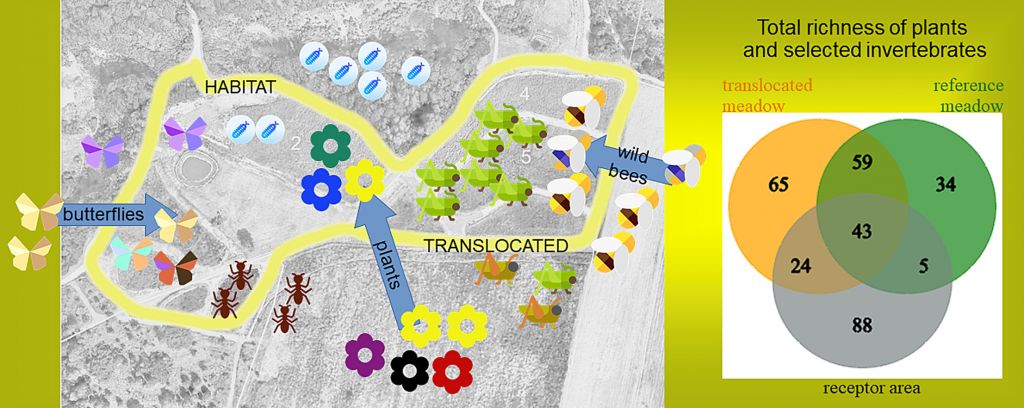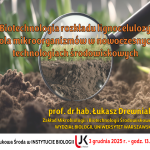Kolejna wysokopunktowana (200 pkt.) publikacja dr hab. Waldemara Celarego, prof. UJK
12 października 2023 P.F.Matching the puzzle piece to a new jigsaw: The effect of surrounding environments on plants and invertebrates in the translocated wet meadow.
Dominika Chmolowska, Marcin Nobis, Elżbieta Rożej-Pabijan, Irena M. Grześ, Paweł Radzikowski, Mateusz Okrutniak, Waldemar Celary, Jakub Sternalski, Julia Shrubovych, Katarzyna Wasak-Sęk
(200 pkt MNiSW)
Habitat translocation is a method of habitat salvation conducted in cases of its inevitable destruction during construction projects. To evaluate the large-scale turf translocation of wet meadows to derelict land, with consideration of the possible impact of the surrounding area on the translocated habitat, salvaged Molinion meadows were compared to reference meadows near the donor site and to varied plots in the receptor area. The study included the soil, vegetation and selected groups of invertebrates at different motility and food levels. Pollinators (wild bees, butterflies), grasshoppers, ants and soil mesofauna, with emphasis on springtails, were counted and identified to the species level. Lower numbers of springtails and higher numbers of grasshoppers were observed in the translocated plots than in the reference plots. For springtails, the decreased soil porosity was a clear disadvantage. Mobile animals with a high food specificity responded dynamically to the habitat translocation. The translocated plots maintained their biodiversity. However, an influx of cosmopolitan species was noticeable, especially for the plants and pollinators. A few vulnerable species declined in number. The habitat translocation to derelict land was associated with a deterioration of the ecological condition of the habitat; thus, natural habitats should be preserved where they are if possible. However, in the case of their inevitable destruction, translocation is better than nothing. Revitalised areas can be a valuable spot for local pollinators, as well as for other animals, as far as their biodiversity is maintained. Caring for pollinators, which are under threat on a global scale, should be a particular concern for the safety of crops and phytocoenoses.
https://doi.org/10.1016/j.scitotenv.2023.166637 .
https://www.sciencedirect.com/science/article/abs/pii/S0048969723052622?via%3Dihub .














